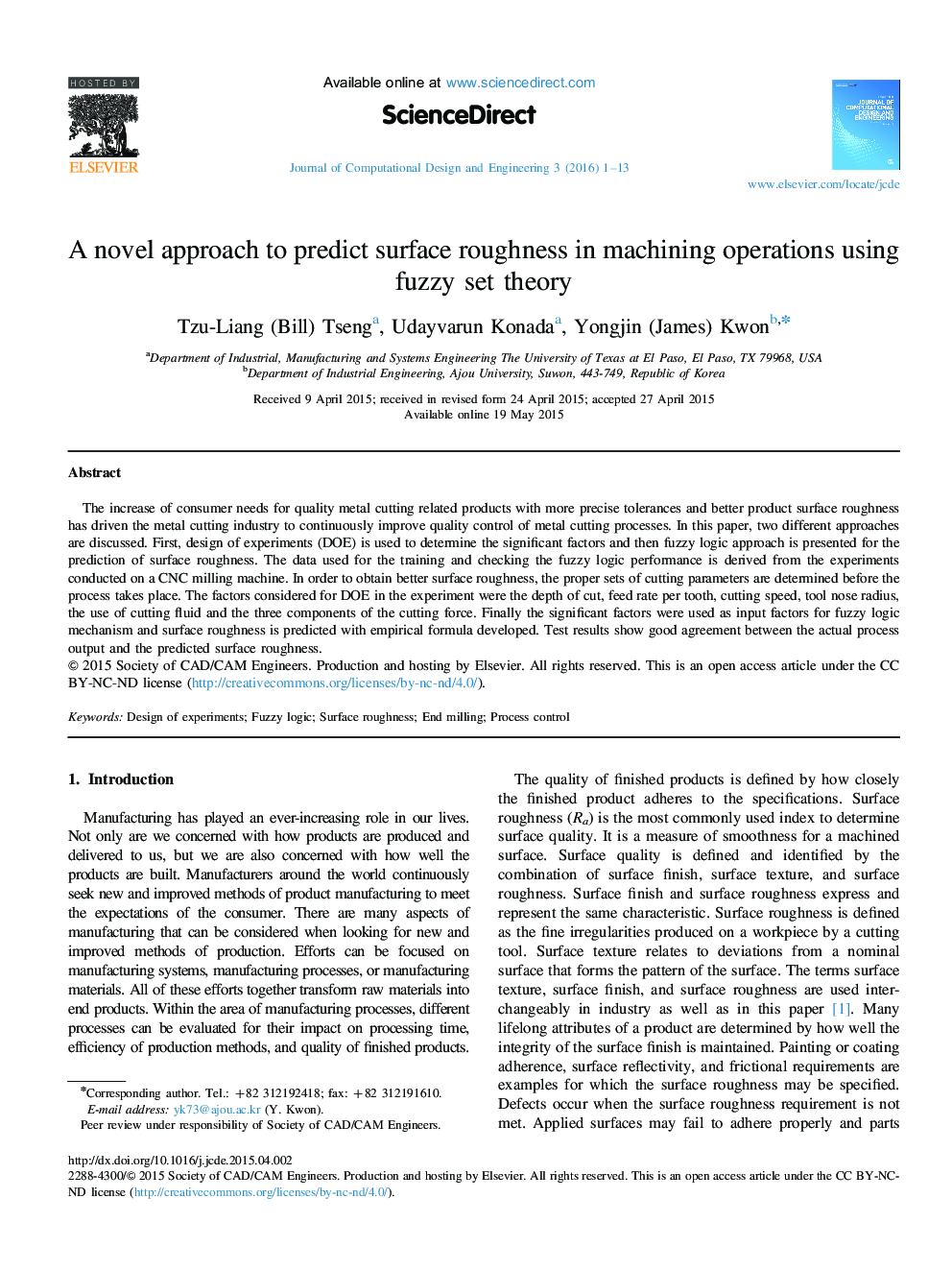| Article ID | Journal | Published Year | Pages | File Type |
|---|---|---|---|---|
| 442795 | Journal of Computational Design and Engineering | 2016 | 13 Pages |
•This work uses innovative methods in process prediction with the application of FST.•Many potential benefits of fuzzy set theory have been presented and instantiated.•The fuzzy set equations are built on the data obtained from the experiments.•A detailed analysis is presented using experimental case study.•The results indicate the good accuracy of proposed method.
The increase of consumer needs for quality metal cutting related products with more precise tolerances and better product surface roughness has driven the metal cutting industry to continuously improve quality control of metal cutting processes. In this paper, two different approaches are discussed. First, design of experiments (DOE) is used to determine the significant factors and then fuzzy logic approach is presented for the prediction of surface roughness. The data used for the training and checking the fuzzy logic performance is derived from the experiments conducted on a CNC milling machine. In order to obtain better surface roughness, the proper sets of cutting parameters are determined before the process takes place. The factors considered for DOE in the experiment were the depth of cut, feed rate per tooth, cutting speed, tool nose radius, the use of cutting fluid and the three components of the cutting force. Finally the significant factors were used as input factors for fuzzy logic mechanism and surface roughness is predicted with empirical formula developed. Test results show good agreement between the actual process output and the predicted surface roughness.
